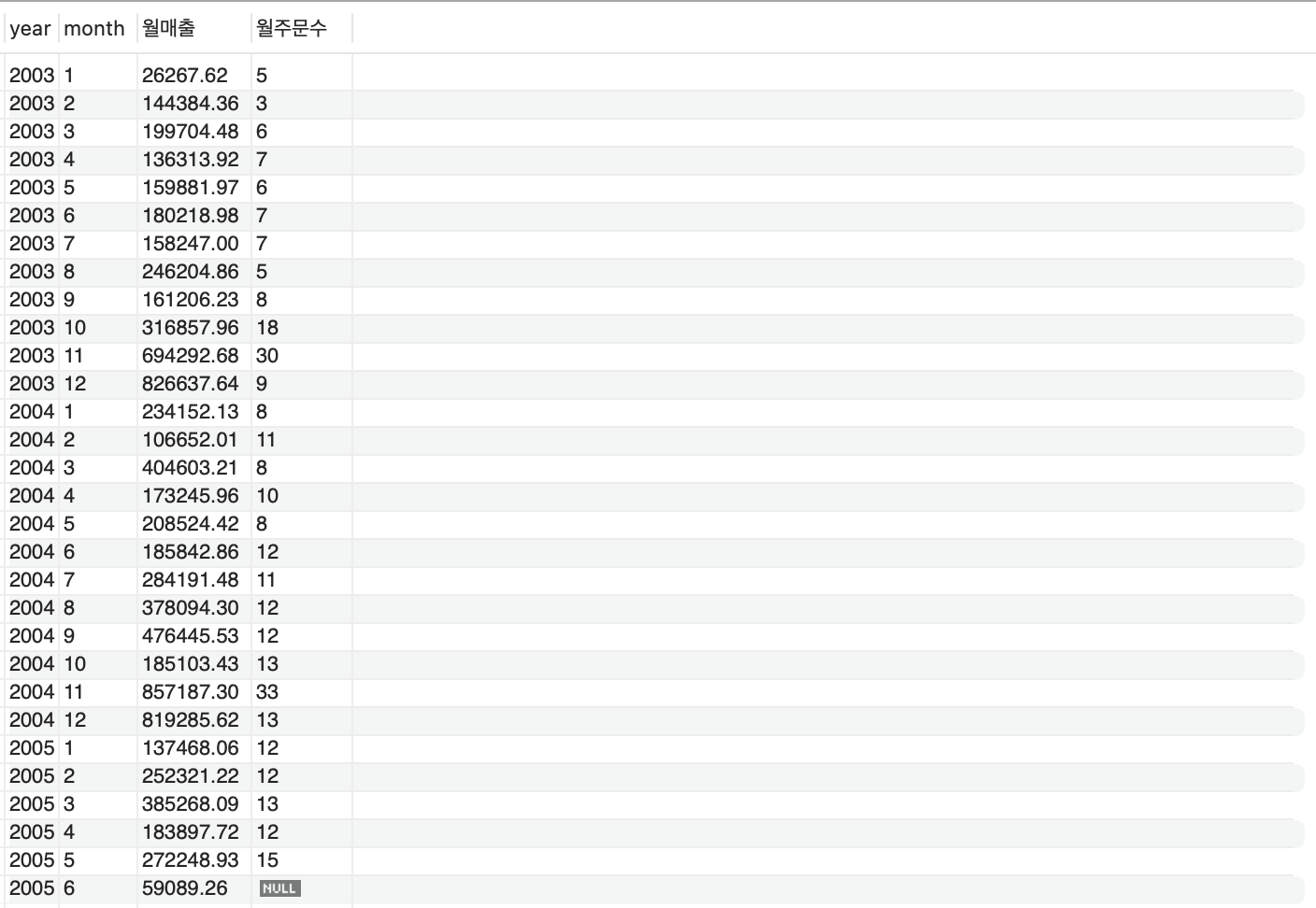
본 포스팅은 YBIGTA DA 19기 이재영 팀장님의 발제 자료를 바탕으로 작성되었습니다.
SQL
- 사용자와 데이터베이스 시스템 간의 의사소통을 위해 생긴 언어
- 관계형 데이터베이스 관리 시스템(RDBMS)의 데이터를 관리하기 위해 설계된 특수 목적의 프로그래밍 언어
- 수많은 데이터가 모여 데이터베이스를 구성
- 이용자의 편의를 위해 비슷한 성격의 데이터를 한 데이터베이스에 모아놓음
- 데이터베이스는 DBMS를 통해 관리
ex) MySQL, Oracle, MsSQL, PostgreSQL
왜 SQL을 공부해야 하는가?
데이터 분석에서 제일 중요한 것은 목적에 부합하는 데이터들을 알맞게 추출하는 것인데, 이 때 SQL이 큰 역할을 한다. 대부분의 회사, 정부기관, 은행 등의 주요 데이터들은 RDBMS의 형태로 저장 및 관리되고 있다. 앞서 말했듯, SQL은 이러한 RDBMS의 데이터 관리에 최적화된 언어이다. SQL을 통해 필요에 맞는 데이터를 쉽고 빠르게 추출할 수 있는 동시에, 데이터를 추출하는 과정에서 데이터 자체에 대한 이해도도 높일 수 있다. 이것이야말로 일석이조?
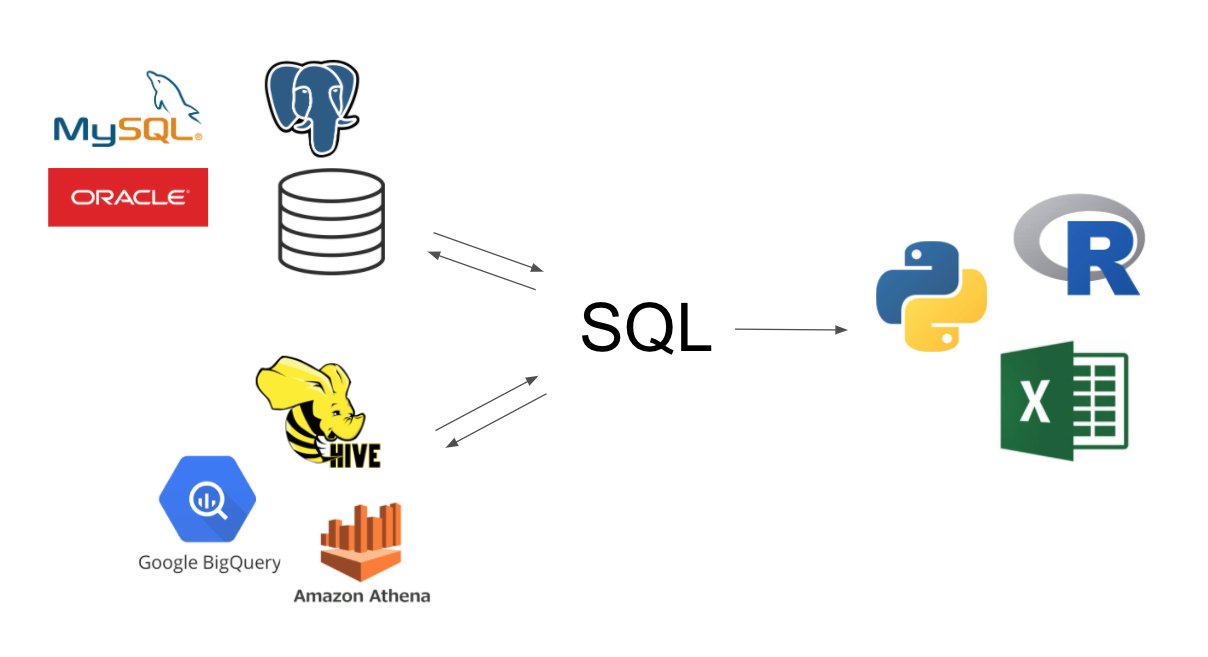
SQL을 통해 다양한 데이터에 접근이 가능 + SQL을 통해 추출한 데이터를 이용해 올바른 분석이 가능!
사용 예시
- 대형마트 → 토요일 오후에 어떤 물품이 가장 많이 팔리는지를 파악하여 물건 배치
- 통신사 → 스마트폰 판매 데이터를 이용하여 어떤 색상, 어떤 기종이 인기가 많은지 파악하여 판매 전략 수립
- 카드사 → 고객의 사용 패턴을 파악하여 맞춤 상품 제시
기본 문법
연산 방법
select 1+2;기본 구조
select 열 이름 # 열 여러 개일 경우 쉼표(,) 사용
from 테이블명;응용 구조
select 열 이름
from 테이블명
where 조건
group by 열 이름
having 검색 조건(about group by)
order by 열 이름(asc/desc or 1, 2);etc
# 집계함수: sum, avg, count, max, min 등
# where 조건: 비교(=, <>, >=, >, <=, <), 범위(between a and b),포함(in, not in), 패턴(like, not like), null(is null, is not null), 여러개 묶기(and, or, not)
select * from 테이블명; # 전체 선택
select distinct 열 이름 from 테이블명; # 중복 제거
select 열 이름 as ___ from 테이블명; # 필드 명 재설정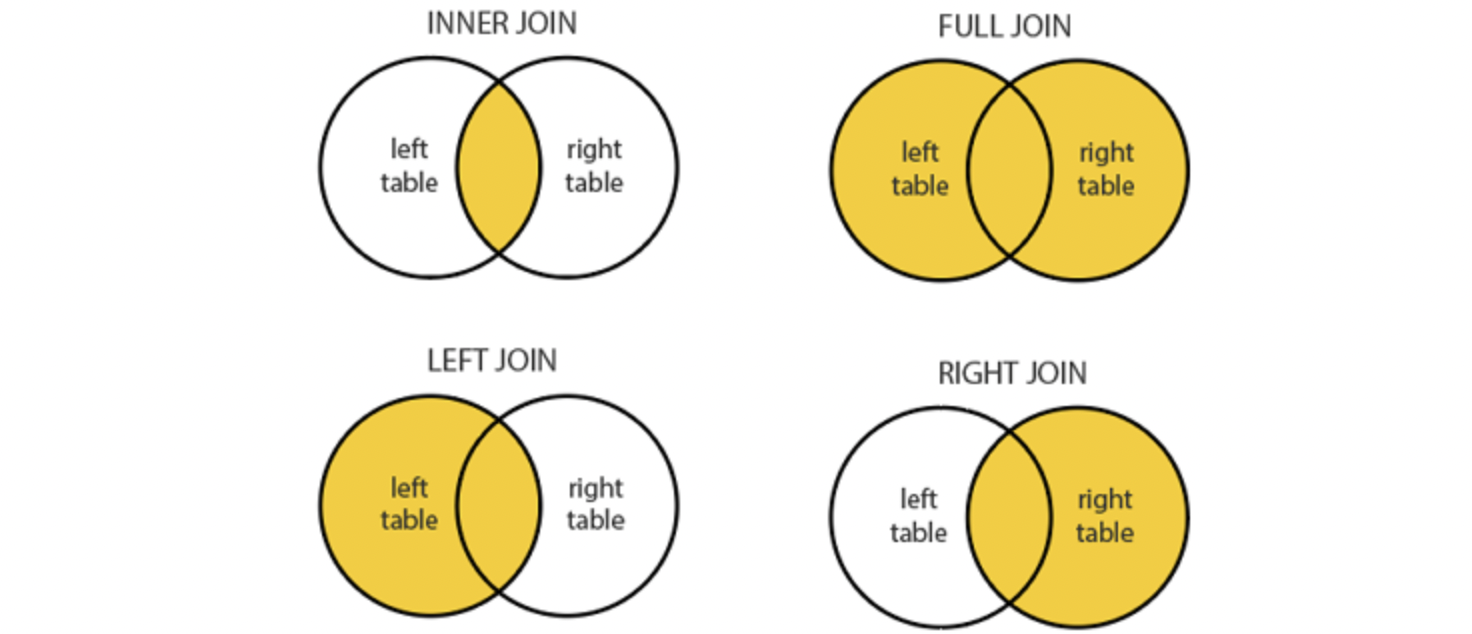
Join(조인)은 한 데이터베이스 내의 여러 테이블의 레코드를 조합하여 하나의 열로 표현한 것이다. 따라서 조인은 테이블로서 저장되거나, 그 자체로 이용할 수 있는 결과 셋을 만들어 낸다. (위키백과)
실습
MySQL을 통해 실습 진행
데이터: MySQL Sample Database
ER 모델 (Entity-Relationship model)
요구사항으로부터 얻어낸 정보들을 개체(Entity), 애트리뷰트(Attribute), 관계성(Relation)으로 기술하는 데이터 모델
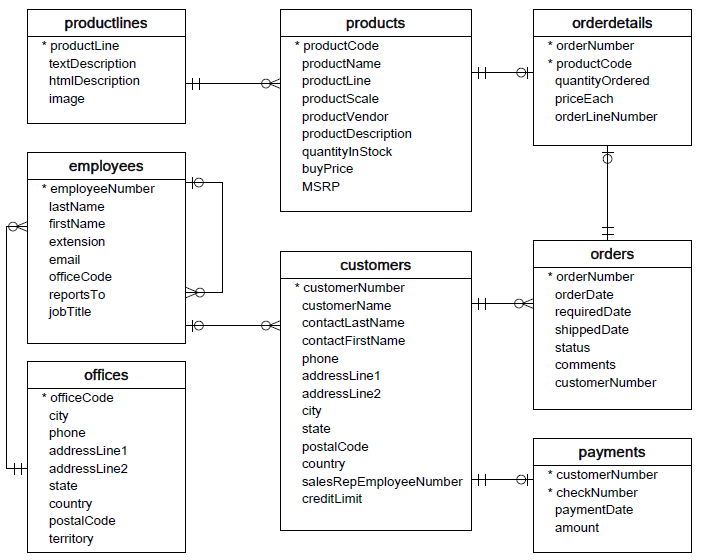
예제
- 현재 데이터베이스의 테이블 목록 조회
show tables from classicmodels;
- 총 고객 수
select count(distinct customerNumber) from customers;
- lastname이 Brown인 고객 수
select count(customerNumber) from customers
where contactLastName = 'Brown';
- 핸드폰 번호가 4로 시작하는 고객 수
select count(customerNumber) from customers where phone like "4%";
- 고객들이 거주하는 국가리스트
select distinct country from customers;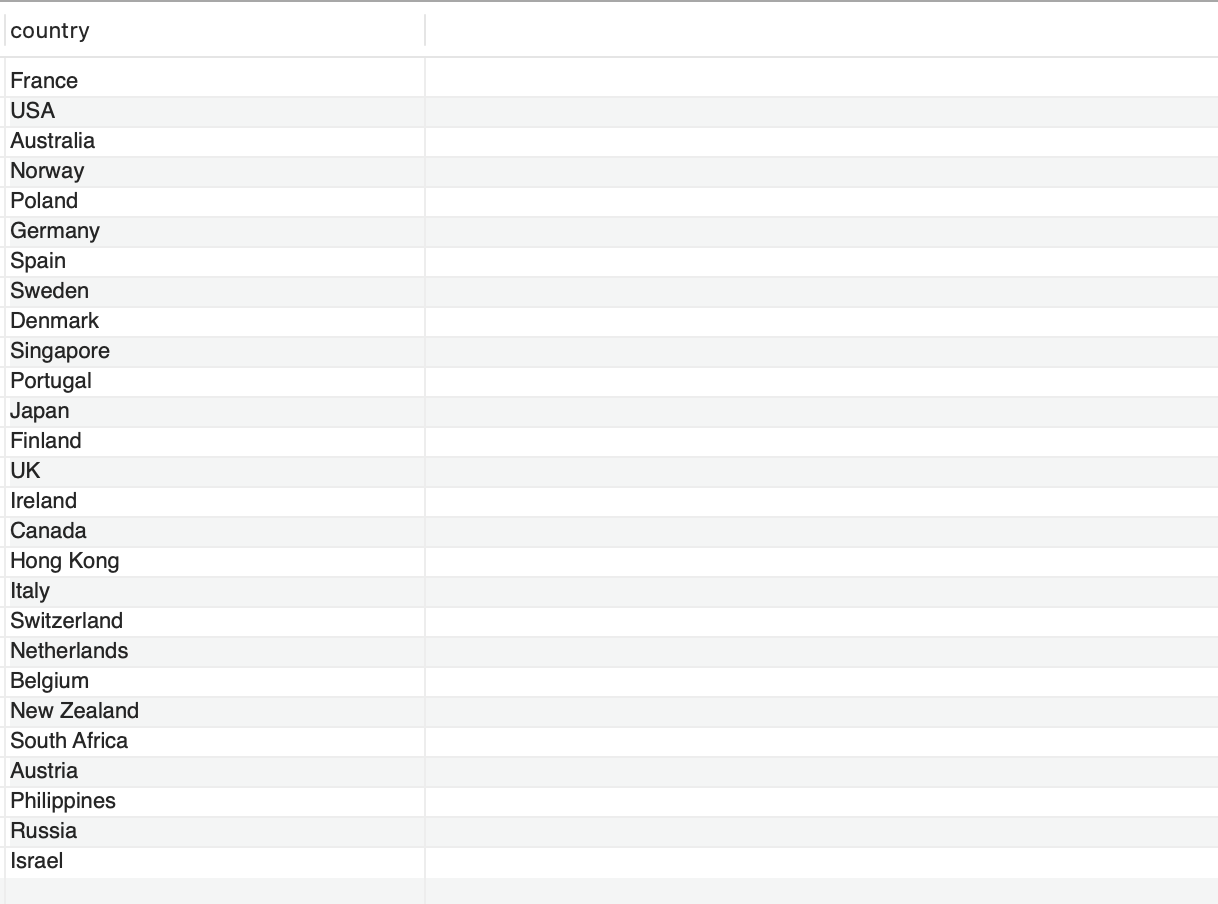
- 세일즈 사원이 각각 담당하는 고객 수
select salesRepEmployeeNumber, count(distinct customerNumber) as 담당고객수 from customers
where salesRepEmployeeNumber is not null group by salesRepEmployeeNumber;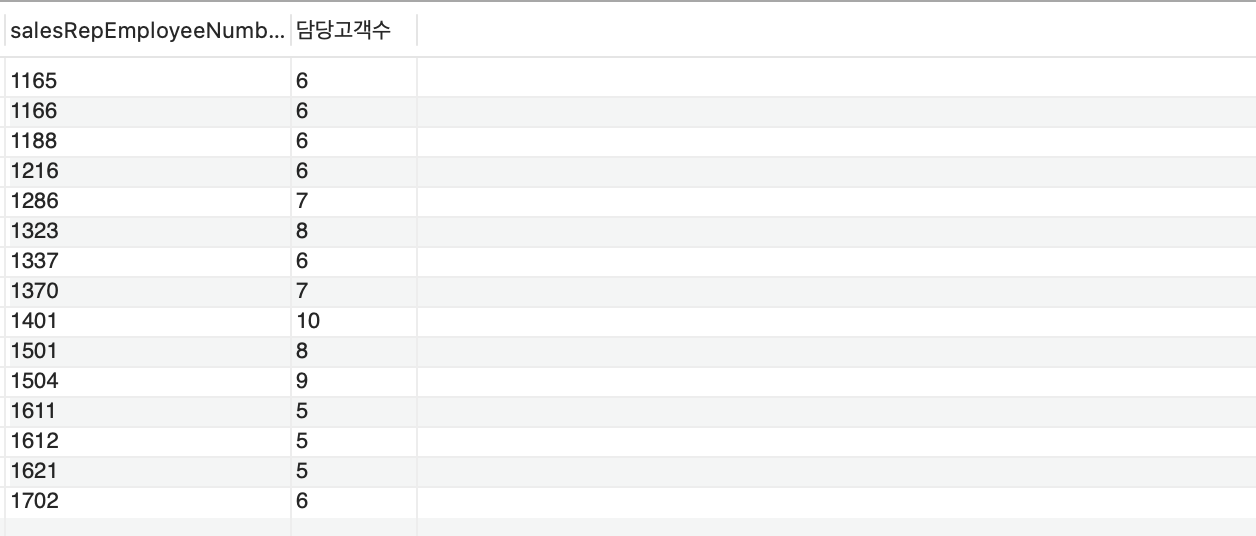
- 7명 이상의 고객을 담당하는 세일즈 사원 리스트
select salesRepEmployeeNumber, count(distinct customerNumber) as 담당고객수 from customers
where salesRepEmployeeNumber is not null group by salesRepEmployeeNumber
having count(distinct customerNumber) >= 7;
- 월별 고객 수
select extract(year from orderDate) as year, extract(month from orderDate) as month,
count(distinct customerNumber) as 고객수 from orders
group by 1, 2
order by 1, 2;# 다른 풀이
select date_format(orderDate, '%y-%m') as '연-월',
count(orderNumber) as '고객 수'
from orders group by 1;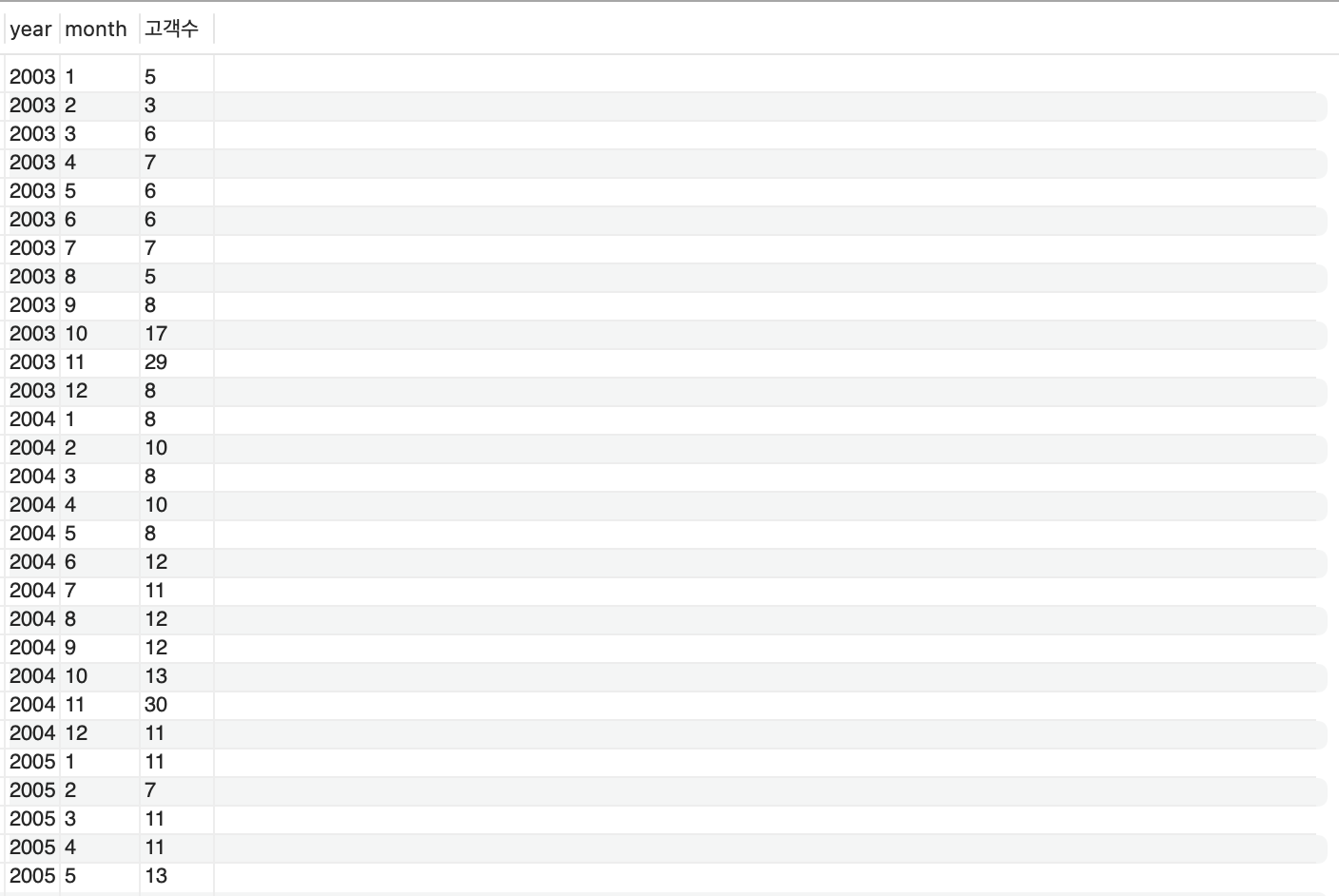
- 월별 주문을 담당한 office 수
select extract(year from orderDate) as year,
extract(month from orderDate) as month,
count(distinct officeCode) as office개수 from orders
left join customers on orders.customerNumber = customers.customerNumber
left join employees on customers.salesRepEmployeeNumber = employees.employeeNumber
group by 1, 2
order by 1, 2;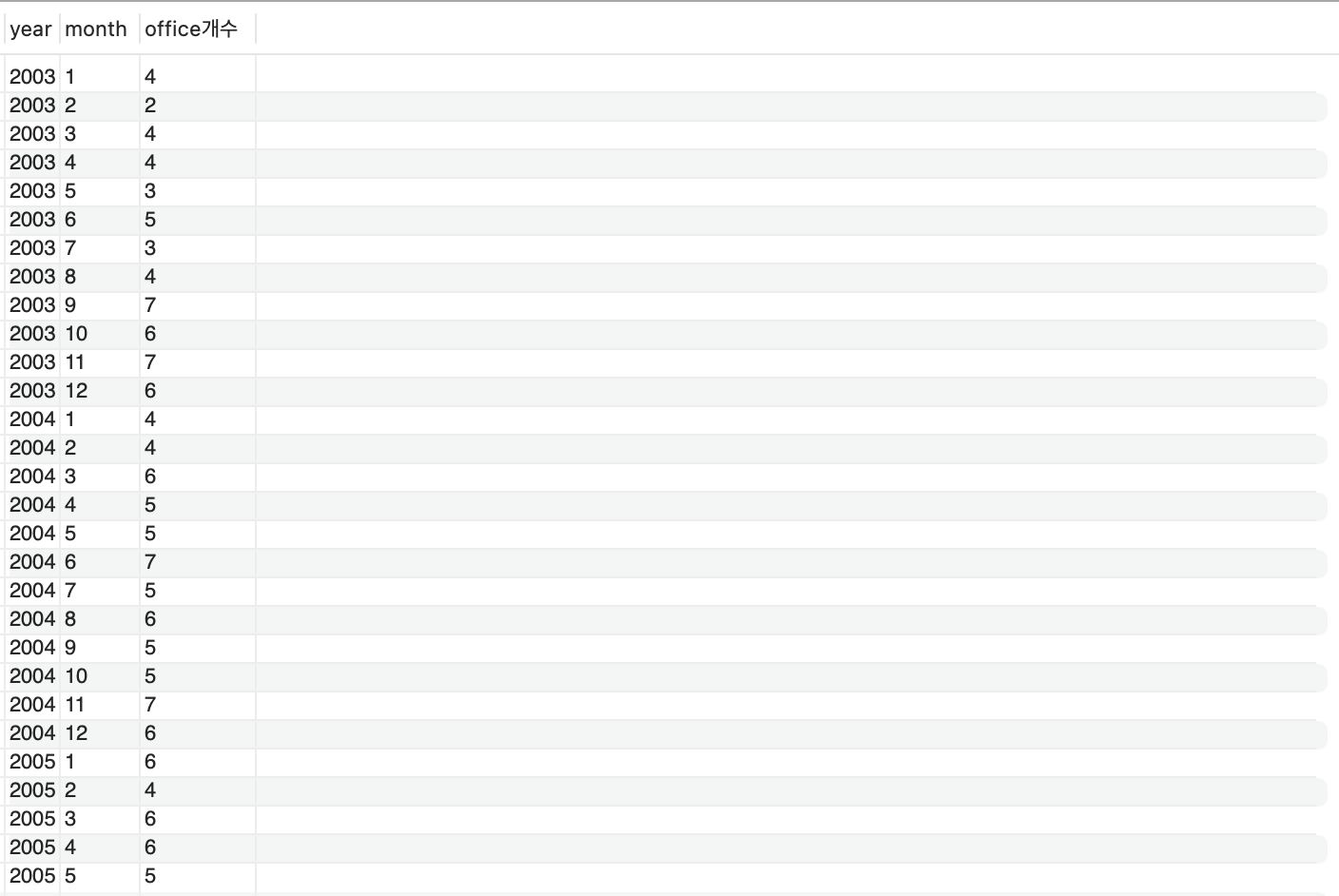
- 2003년도 주문의 월별 주문 건수와 평균 주문 날짜~배송일자
(주문에서 배송까지 걸린 시간)
select extract(year from orderDate) as year,
extract(month from orderDate) as month,
count(distinct orderNumber) as 주문건수,
avg(shippedDate-orderDate) as 평균소요일
from orders
where extract(year from orderDate) = 2003
group by 1, 2
order by 1, 2;
- 국가별 고객의 주문 건수와 평균 주문 날짜~배송일자
select country, count(distinct orderNumber) as 주문건수,
avg(shippedDate-orderDate) as 평균소요일 from orders
left join customers on orders.customerNumber = customers.customerNumber
group by 1;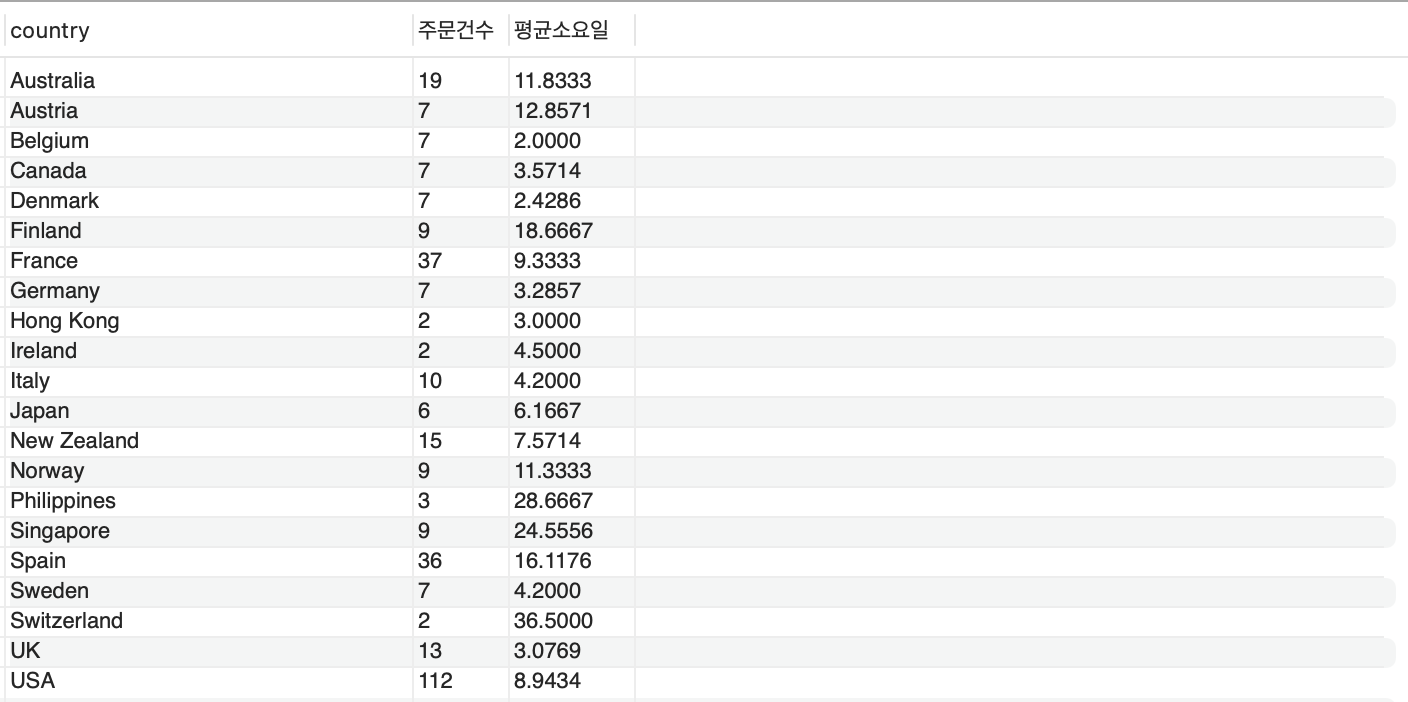
- 미국의 연, 월별 주문 건수와 평균 주문 날짜~배송일자
select extract(year from orderDate) as year,
extract(month from orderDate) as month,
count(distinct orderNumber) as 주문건수,
avg(shippedDate-orderDate) as 평균소요일
from orders
left join customers on orders.customerNumber = customers.customerNumber
where country = "USA"
group by 1, 2;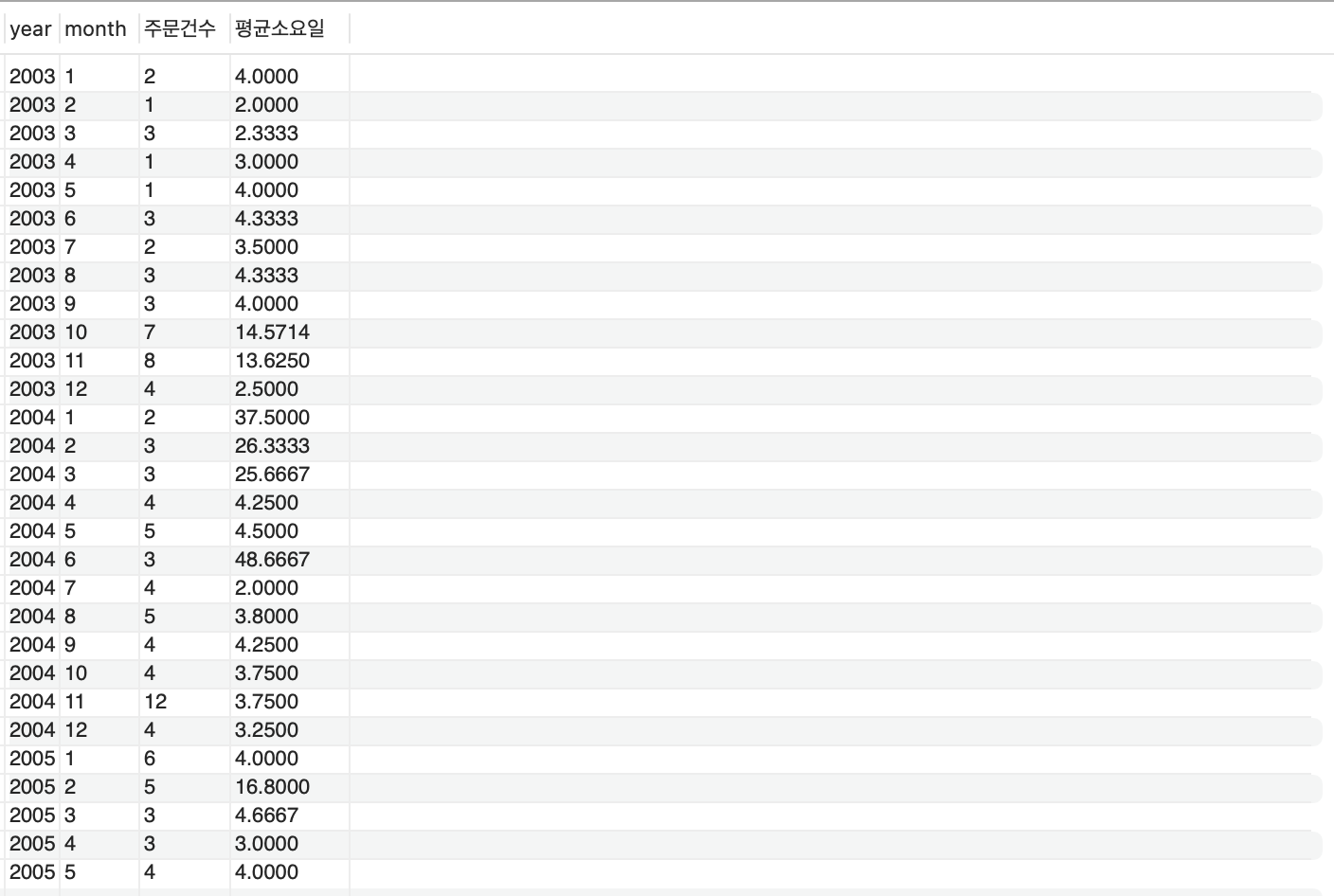
- 월 매출
select extract(year from paymentDate) as year,
extract(month from paymentDate) as month,
sum(amount) as '매출 합' from payments group by 1, 2;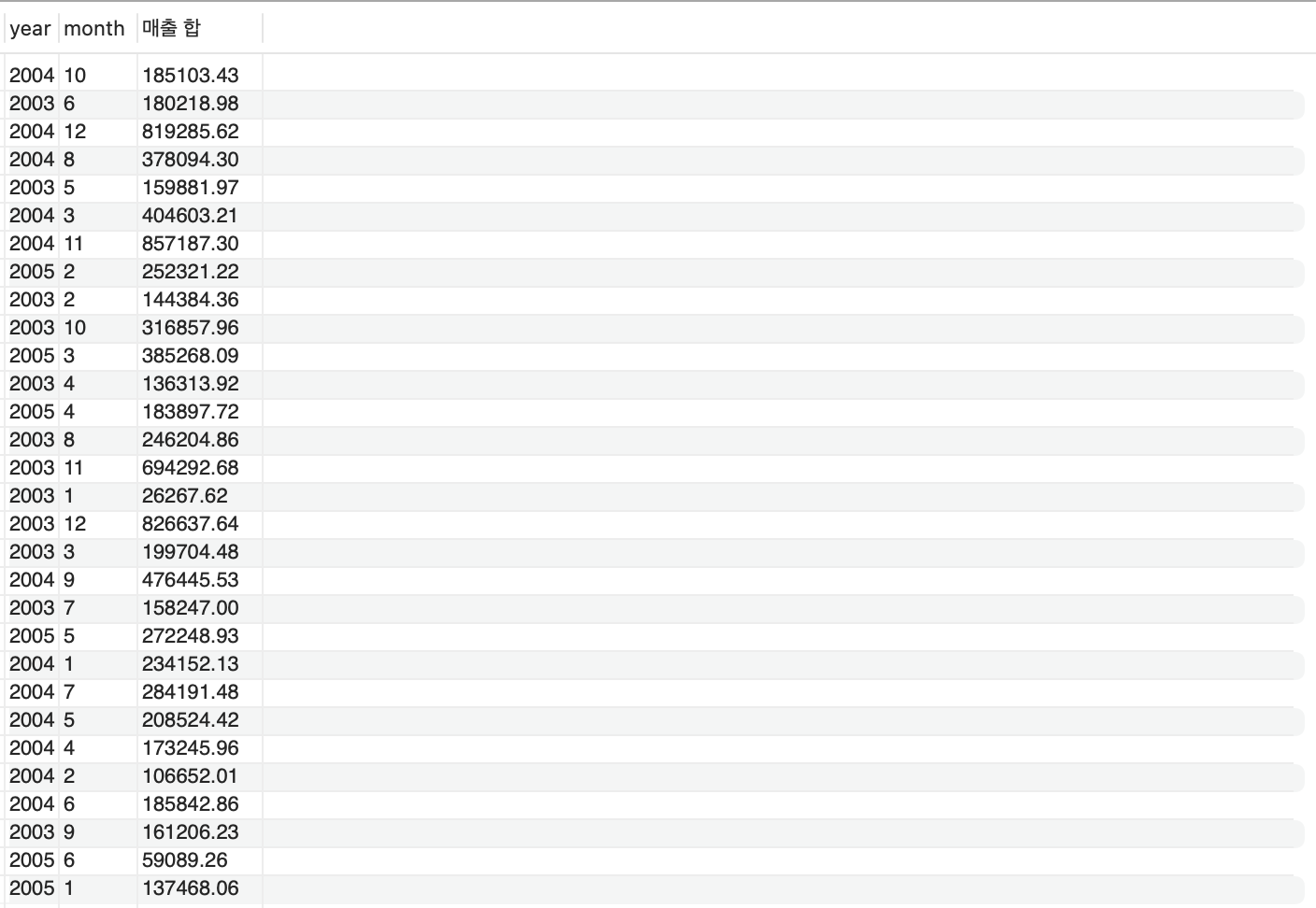
- 미국의 월 매출
select extract(year from paymentDate) as year, extract(month from paymentDate) as month,
sum(amount) as '매출 합' from payments
left join customers on payments.customerNumber = customers.customerNumber
where country = 'USA'
group by 1, 2 order by 1, 2;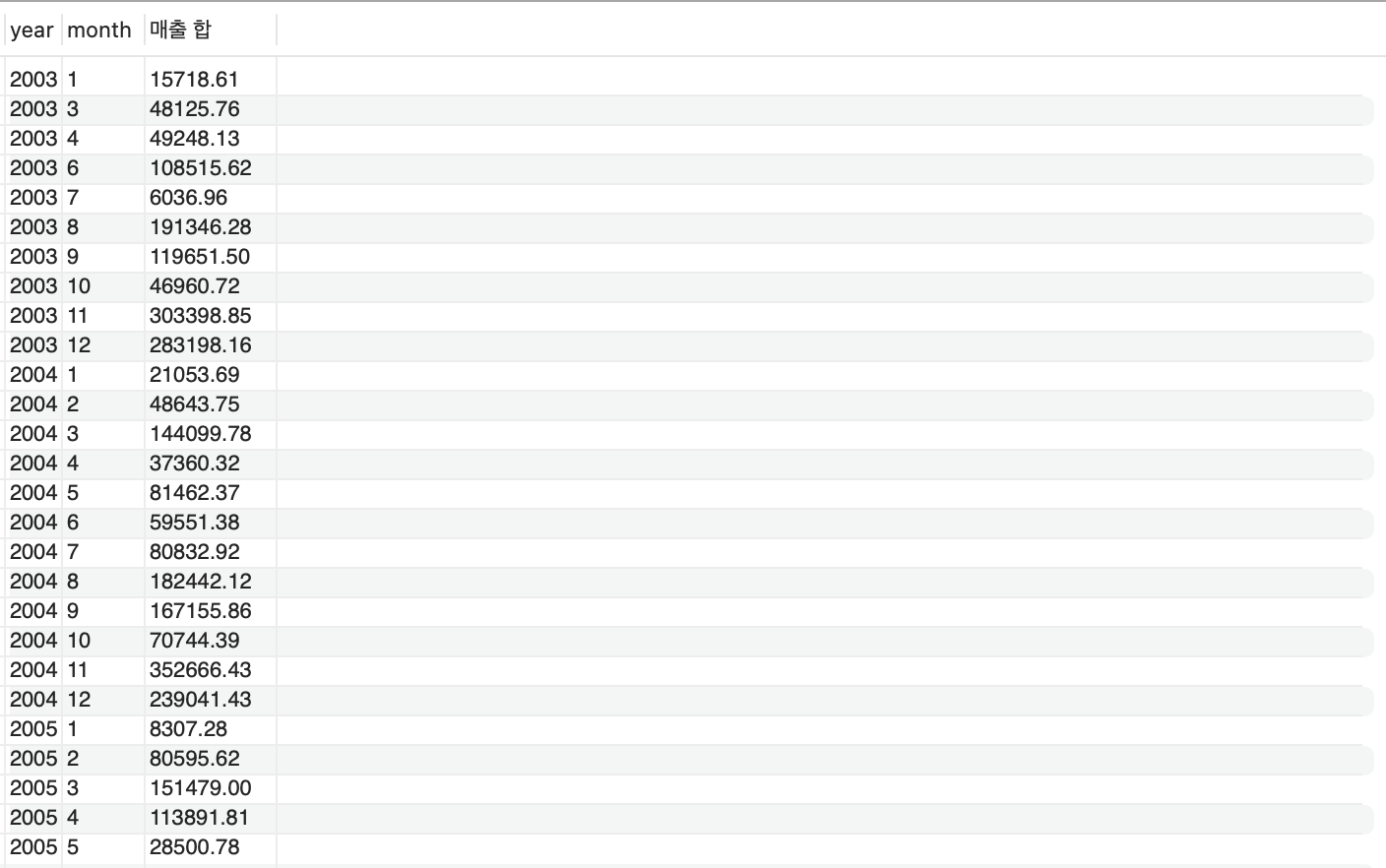
- 국가별 월 매출
select country, extract(year from paymentDate) as year, extract(month from paymentDate) as month,
sum(amount) as '매출 합' from payments
left join customers on payments.customerNumber = customers.customerNumber
group by 1, 2, 3 order by 1, 2, 3;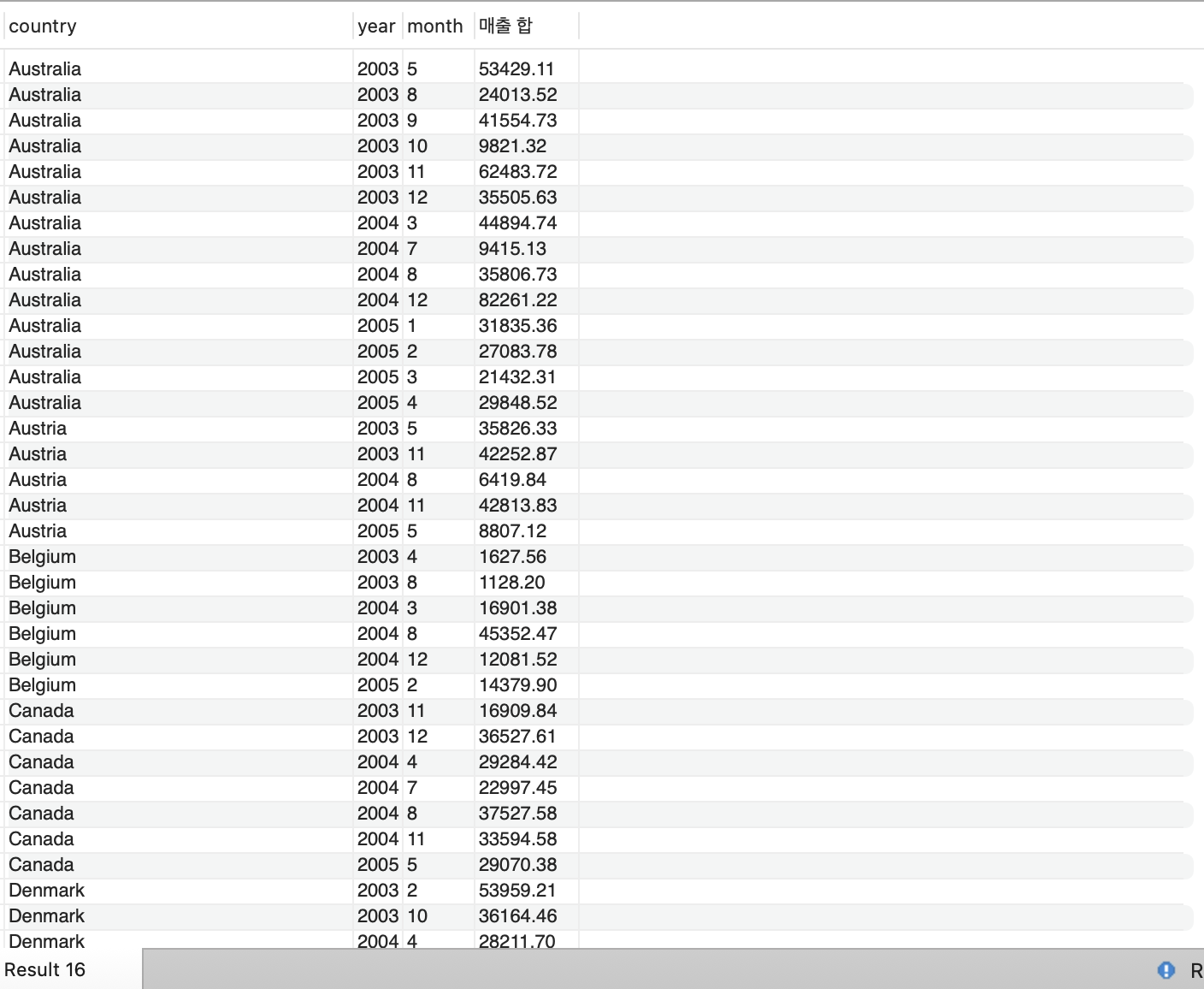
- 누적 결제 금액 100000 이상인 고객들의 정보
select customerName, country, phone from customers
where customerNumber in (select customerNumber from payments group by 1 having sum(amount) >= 100000);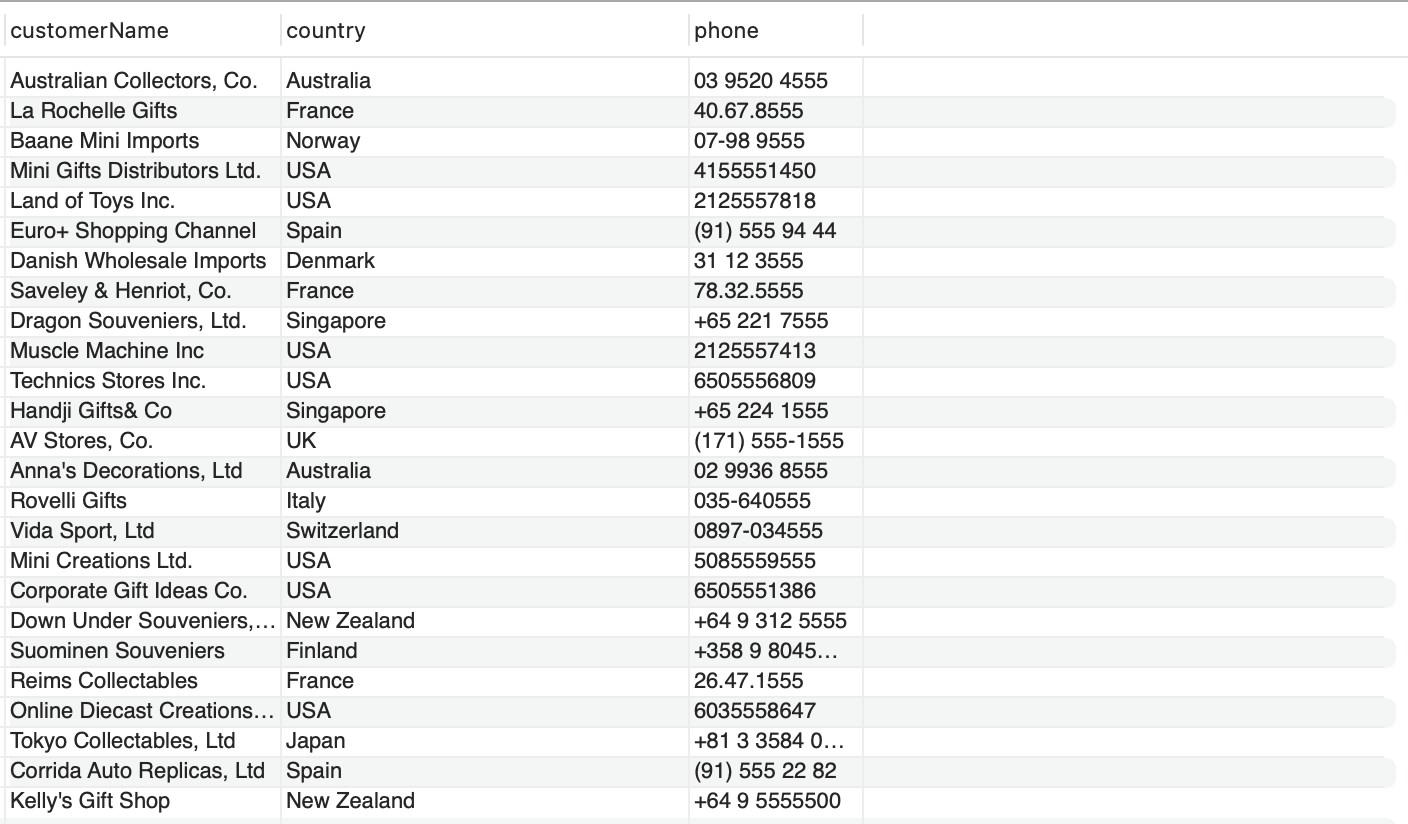
- 월별 주문 건수와 매출을 한번에 보기
select salestable.year, salestable.month, 월매출, 월주문수
from (select extract(year from paymentDate) as year,
extract(month from paymentDate) as month, sum(amount) as 월매출
from payments group by 1, 2) as salestable
left join (select extract(year from orderDate) as year,
extract(month from orderDate) as month, count(distinct orderNumber) as 월주문수
from orders group by 1, 2)
as ordertable on salestable.year = ordertable.year and salestable.month = ordertable.month
order by 1, 2;